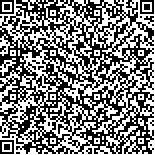| 引用本文: | 杨国明,朱俊江,赵冬冬,熊梓翔,王长盛,欧小林,贾永刚,李三忠.浅地层剖面探测技术及应用[J].海洋科学,2021,45(6):147-162. |
| |
|
| |
|
|
| 本文已被:浏览 1012次 下载 849次 |

码上扫一扫! |
|
|
| 浅地层剖面探测技术及应用 |
|
杨国明1,2, 朱俊江1,2, 赵冬冬3, 熊梓翔1,2, 王长盛1,2, 欧小林1,2, 贾永刚4,5, 李三忠1,2
|
|
1.深海圈层与地球系统前沿科学中心, 海底科学与探测技术教育部重点实验室, 中国海洋大学 海洋高等研究院和海洋地球科学学院, 山东 青岛 266100;2.青岛海洋科学与技术国家实验室 海洋矿产资源评价与探测技术功能实验室, 山东 青岛 266100;3.中国冶金地质总局青岛地质勘察院, 山东 青岛 266109;4.中国海洋大学山东省海洋环境地质工程重点实验室, 青岛 266100;5.青岛海洋科学与技术国家实验室 海洋地质过程和环境功能实验室, 青岛 266237
|
|
| 摘要: |
| 浅地层剖面技术是应用声学原理高效获取海底面之下浅部地质地球物理信息的探测技术,主要应用于海底浅地层信息探测和海底特殊目标调查等方面。以往研究者主要集中在浅地层剖面的具体应用,未对不同类型的浅剖应用效果进行综合对比分析,本文比较4种不同类型浅地层剖面系统的组成、工作方式和探测技术参数,认为不同尺度的探测目标需要应用不同类型的浅地层剖面系统。分析和对比不同震源类型浅剖的应用案例,发现电火花震源穿透能力最强,分辨率随工作频率的增大而提高;电磁式震源穿透深度与分辨率适中;压电换能器震源分辨率较高,穿透能力弱;参量阵震源利用差频原理,信号中包含高频与低频两部分,能够同时得到较高的分辨率与较大的穿透深度。未来浅地层剖面探测技术向深穿透、高分辨率、高效率、二维向三维甚至高维探测方面发展。 |
| 关键词: 浅地层剖面仪 海底探测技术 震源 数据处理 三维浅剖探测 |
| DOI:10.11759/hykx20201030001 |
| 分类号:P714+.6 |
| 基金项目:山东省自然科学基金面上项目(ZR2019MD036);青岛海洋科学与技术试点国家实验室海洋矿产资源评价与探测技术功能实验室自主课题资助项目(MMRZZ201802);国家自然科学基金重点项目(91958214;41831280);中国海洋大学研究生教育质量提升联合培养基地项目(HDYJ18011);中央高校基本科研业务费专项(202172002) |
|
| Development and application of sub-bottom profiler technologies |
|
YANG Guo-ming1,2, ZHU Jun-jiang1,2, ZHAO Dong-dong3, XIONG Zi-xiang1,2, WANG Chang-sheng1,2, OU Xiao-lin1,2, JIA Yong-gang4,5, LI San-zhong1,2
|
|
1.Frontiers Science Center for Deep Ocean Multispheres and Earth System, Key Lab of Submarine Geosciences and Prospecting Techniques, MOE and College of Marine Geosciences, Ocean University of China, Qingdao 266100, China;2.Laboratory for Marine Mineral Resources, Qingdao National Laboratory for Marine Science and Technology, Qingdao 266100, China;3.Shandong Provincial Key Laboratory of Marine Environment and Geological Engineering, Ocean University of China, Qingdao 266109, China;4.Laboratory for Marine Geology, Pilot National Laboratory for Marine Science and Technology(Qingdao), Qingdao 266100, China;5.Qingdao Geological Exploration Institute, China Metallurgical Geology Bureau, Qingdao 266237, China
|
| Abstract: |
| The sub-bottom profiler (SBP) is a sounding technology that can efficiently obtain shallow geological and geophysical information from under the seabed based on the principle of acoustics. SPBs are mainly used in the explorations of the seabed strata and the investigation of special submarine targets. While early SPB users and researchers focused mainly on the practical application of the SBP, they did not compare or analyze application performance of different types of SBPs. In this paper, we compare the composition, workflow, and exploration associated with the technical parameters of four different types of SBPs. Our findings indicate that different SBP types are suitable for exploring different targets under different conditions. Based on our analysis and comparison of applications specific to different source types, we determined that the transmission ability of the Sparker source is the strongest, its resolution increases with increases in the working frequency, and its electromagnetic-source penetration depth and resolution are moderate. The resolution of the piezoelectric transducer is high, but its penetrability is weak. Parametric sources with both high- and low-frequency aspects can ensure a certain penetration depth with high resolution. In the future, the development of SBP exploration technology will be able to achieve deeper penetration, higher resolution, higher efficiency, and three-dimensional or even high-dimensional capability. |
| Key words: Sub-bottom profiler (SBP) Sub-marine exploration technology Source type Data processing 3D SBP exploration |
|
|
|
|
|
|
